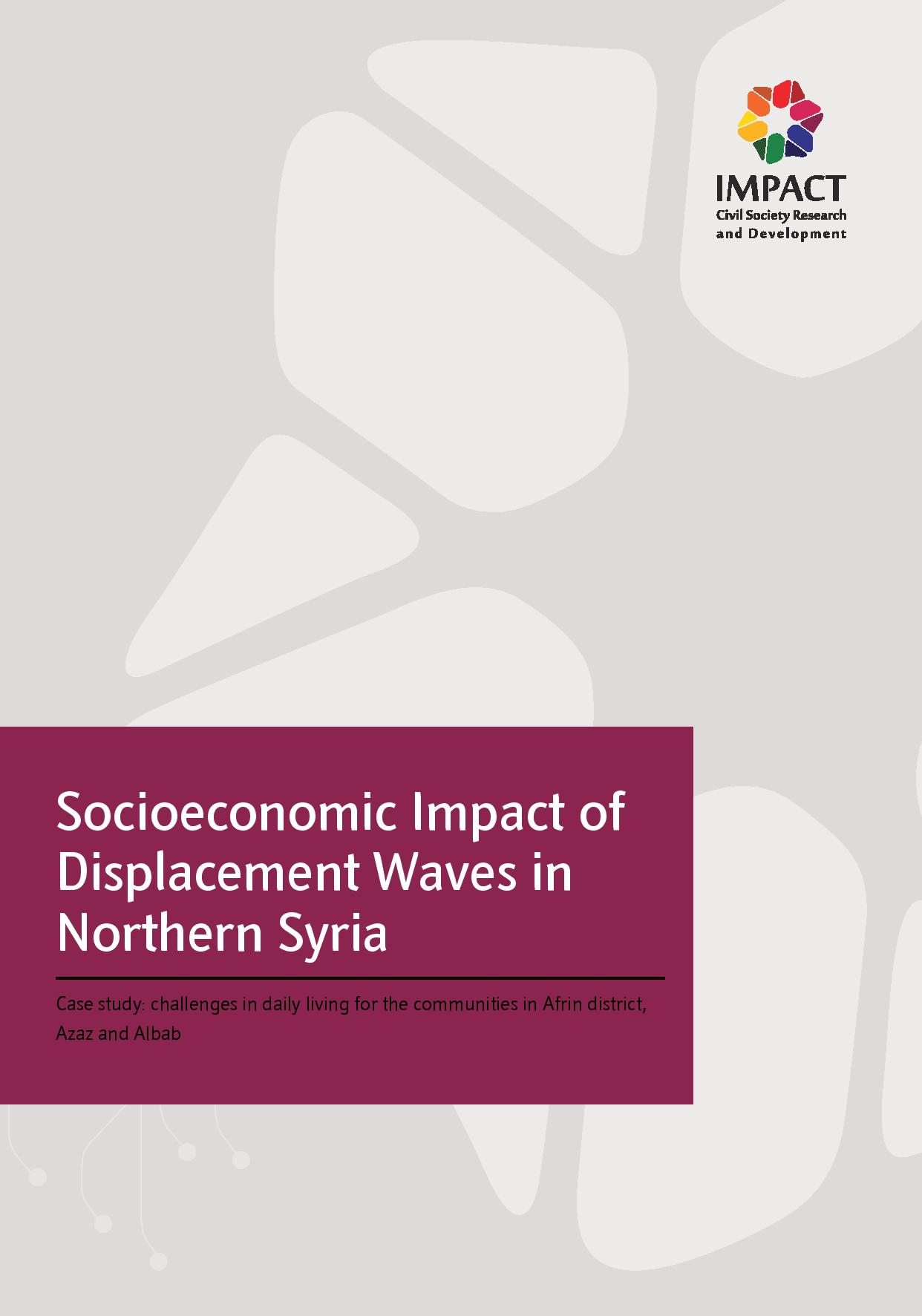To download the full paper please click here.
Executive Summary:
Eight years after peaceful protests started in Syria, approximately half of the country’s population have had to flee from violence. An estimated 6.2 million people are internally displaced, with over 1.6 million population movements recorded between January and December 2018 alone. Meanwhile Syria remains fragmented under multiple areas of control. This has a direct effect on the daily lives of local communities, which often varies across specific sub-regions and towns.
Against this backdrop, this report represents a case study on the effects of mass displacement and change of control on host communities and Internally Displaced Persons (IDPs) living in host communities in northern Syria. More specifically, the report focuses on the local situation in five main locations: Azaz, Albab and Afrin district (Afrin, Rajo and Jenderes). The findings of this case study indicate that a clear distinction can be made between the situation in the towns of Albab and Azaz on the one hand, and the situation in Afrin district (Afrin, Jenderes and Rajo) on the other. Albab and Azaz have been under de facto Turkish control since the latter conducted operation “Euphrates Shield” that was concluded in early 2017, and are gradually enjoying a relative degree of stability. Residents (both locals and IDPs) are however still faced with harsh financial conditions and limited access to services.
In stark contrast, the situation in Afrin district, which came under de facto Turkish control after operation “Olive Branch” (January-March 2018), is characterized by high levels of instability. There, the displacement of local residents and the resettlement of IDPs have exacerbated pre-existing ethnic tensions. The situation is characterised by high discrepancies between local
residents and IDPs in terms of access to personal security, livelihood, freedom of movement and the ability to practice one’s own traditions. Local residents in Afrin district have also been the victims of serious human rights violations and discriminatory practices imposed by armed opposition groups (AOGs), who are also seen as giving privileges to IDPs with connections to AOGs. The combination of these factors have created a sense of alienation among the original residents of Afrin district, which has resulted in a general sense of distrust and even hostility against IDPs. As the latter are also feeling disintegrated in their new host communities, the district’s social fabric is being torn apart.
Aside from the divergences between the situation in Afrin district and in that in Albab and Azaz, the growing Turkish influence is evident across both areas. Through providing official backup to military factions, significant investments in infrastructure rehabilitation, and direct administrative and financial support to local governance structures, Turkey has become the de facto ruler in the whole area. Therefore recommendations provided in this report are partially directed to Turkish authorities, in addition to a set of recommendations offered to international policy makers, donors and civil society organisations.
This paper was written and designed by IMPACT and is published here in collaboration with the Aleppo Project. Jelnar Ahmad presented this paper at the keynote session of the 5th Lemkin Reunion, held in March 2019 and organized by the Shattuck Center at the School of Public Policy, Central European University in Budapest.
Other publications from the 5th Lemkin Reunion can be found in the papers section of the Aleppo Project website.
To download the full paper please click here.
 The Aleppo Project
The Aleppo Project
Join the conversation
You must be logged in to post a comment.